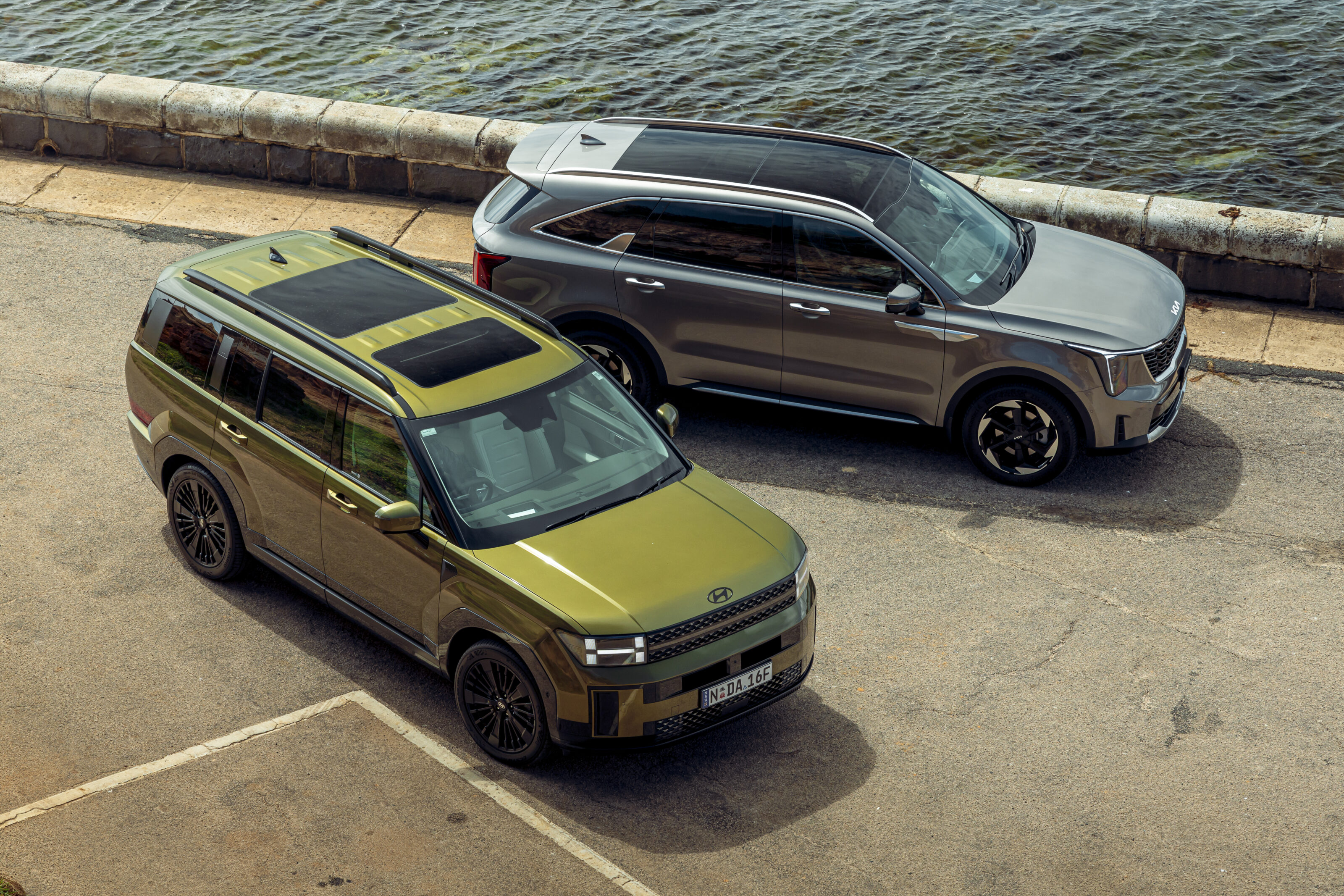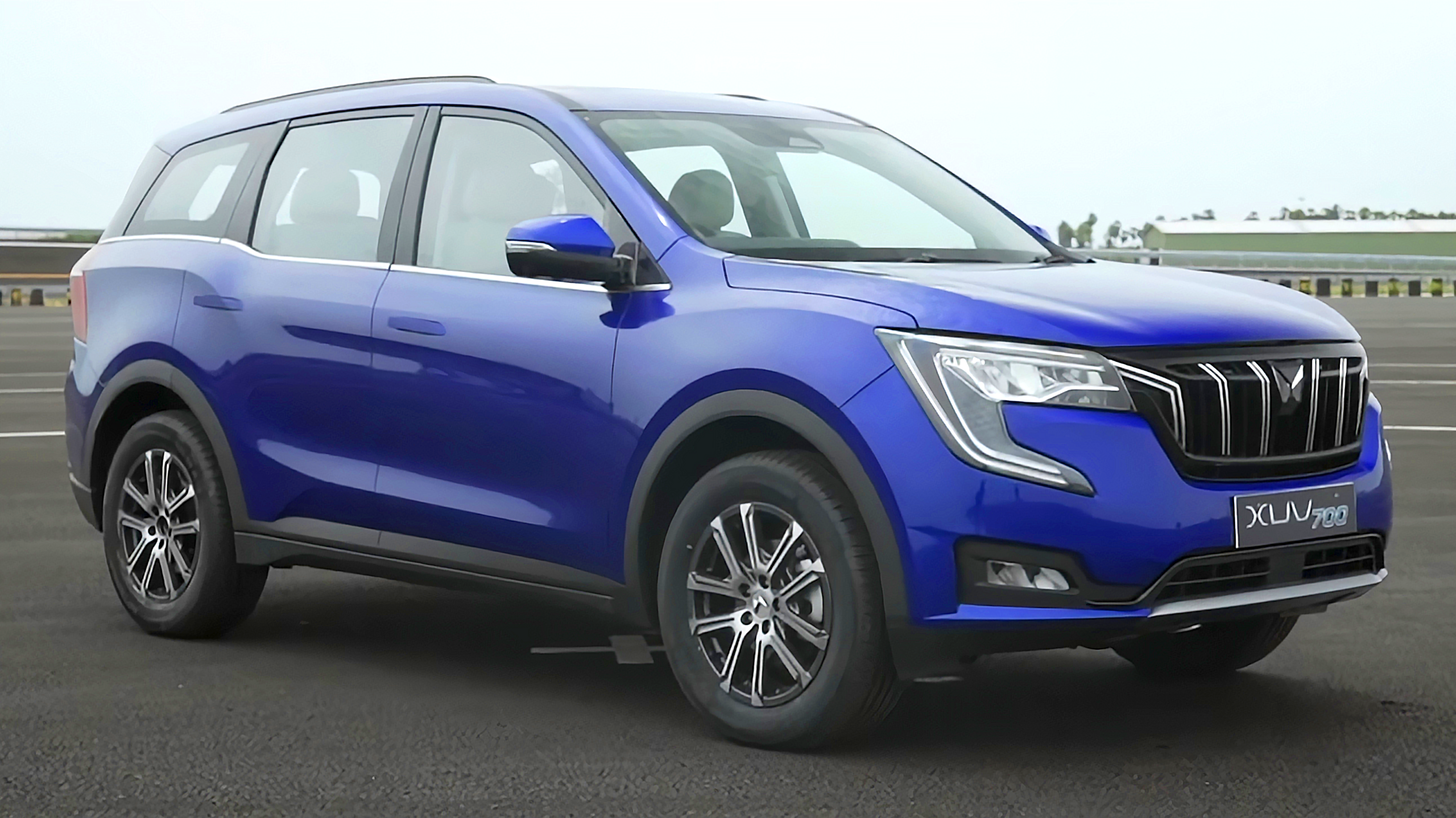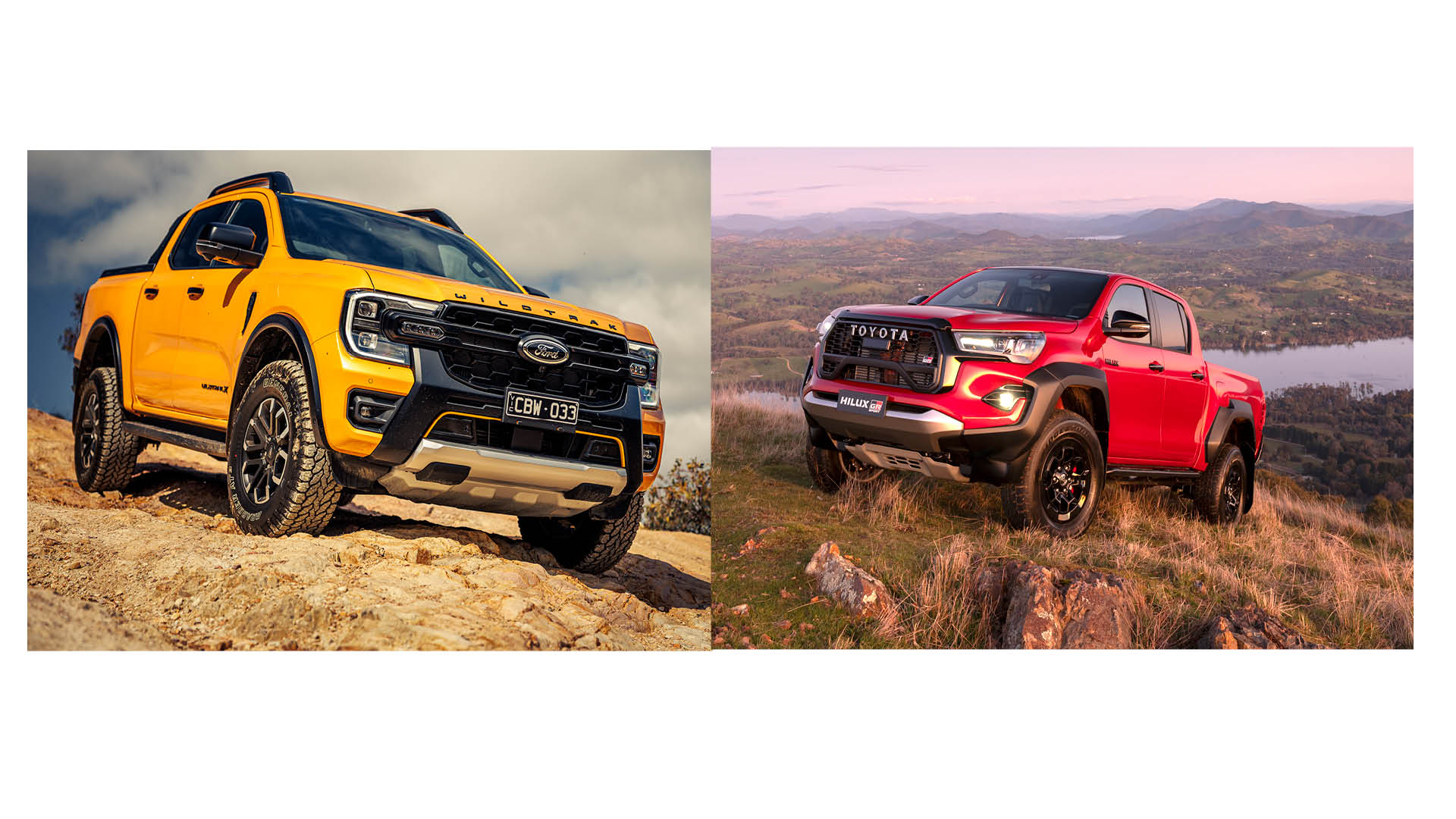If you’ve ever been lucky to drive a supercar, you’ll know that when you slide behind the wheel the world seems to smile upon you. Birds sing in the trees, your ears tingle with pops and crackles from a raspy sports exhaust, and fellow drivers tend to (but not always) greet you warmly with metaphorical hugs and literal thumbs up.
But here’s the thing: in news sure to please those of us who worry about real-life problems like the price of petrol and olive oil, I’ve discovered you don’t need to sell a kidney or max out the mortgage to buy a supercar if you want to receive such positive vibes. No, you can get largely the same experience in the new Hyundai Santa Fe.
Slip inside the strikingly boxy proportions of the fifth-generation Santa Fe (anyone else getting major Land Rover Defender vibes from the exterior design?) and you can feel the eyes of pedestrians follow you as you cruise by. One elderly gentleman even stopped in the middle of a pedestrian crossing to stare quizzically at its lantern-jawed front end, while a fellow driver (she was in a banged-up second-gen Santa Fe) actually rolled down her window at a set of lights and shouted “Wow!” before giving me a double thumbs up.

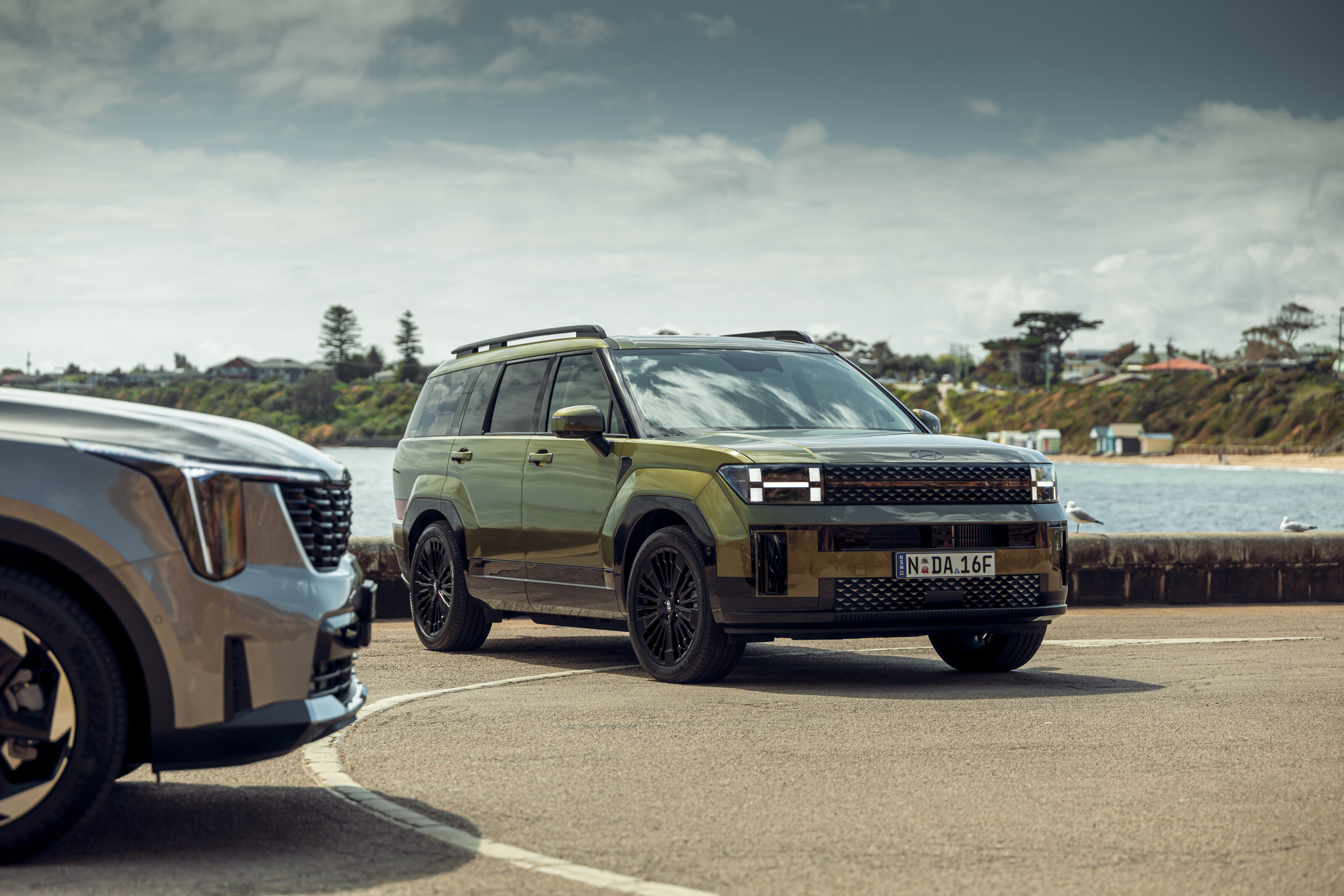
Okay sure, not everyone loves the bold new look (the rear is especially polarising) but there’s no denying this new Santa Fe is a statement piece. The kind of SUV you park proudly on the driveway for your neighbours to see, rather than slinking it into the garage at night. Is there another mainstream seven-seat family SUV that offers such visual clout? Well yes, actually. Enter the Kia Sorento.
A direct sibling to the Hyundai – this pair share their underpinnings, powertrain, interior tech and basic dimensions – the Sorento scored a recent facelift that brought a host of improvements to its chassis and interior.
It also included an exterior redesign and while its handsome proportions remain unchanged, the 2024 Sorento now has a fresh new face and an angular, almost Volvo-like LED lighting signature.
So they’re both adventurous, striking and, dare we say it, desirable, but which of these family haulers is best? To answer that question, we’ve opted to test hybrid versions of each contender, which has pushed the price point of this test into the $70K bracket. You can buy a hybrid-powered Santa Fe for $55,550 before on-road costs, but for now, Kia has reserved its fuel-saving powertrain for the flagship GT-Line model grade, which retails for $73,990 in all-wheel-drive guise. To ensure a level playing field, we’ve nabbed a top-spec Santa Fe Calligraphy AWD which costs $1010 more than the Kia at $75,000.
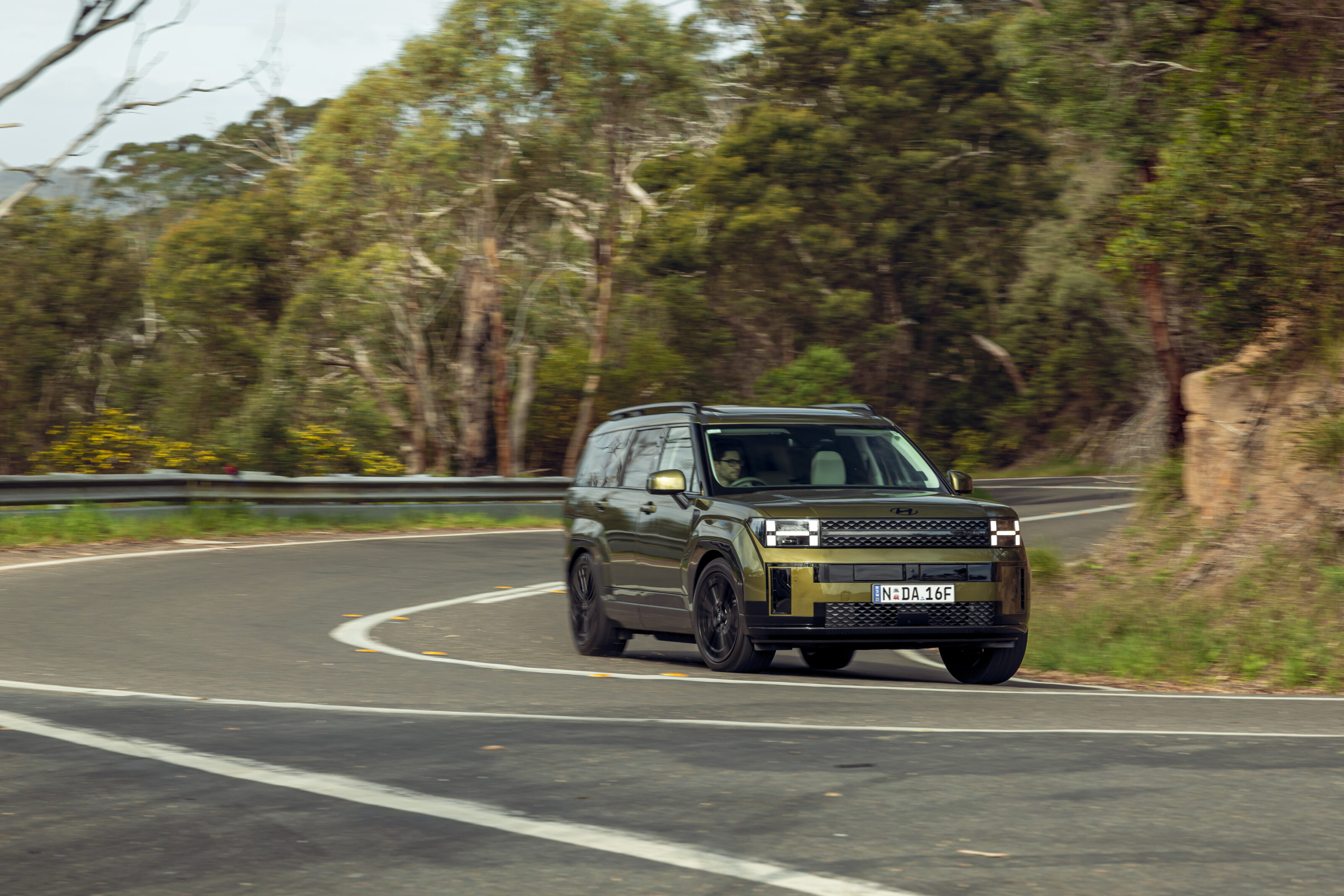
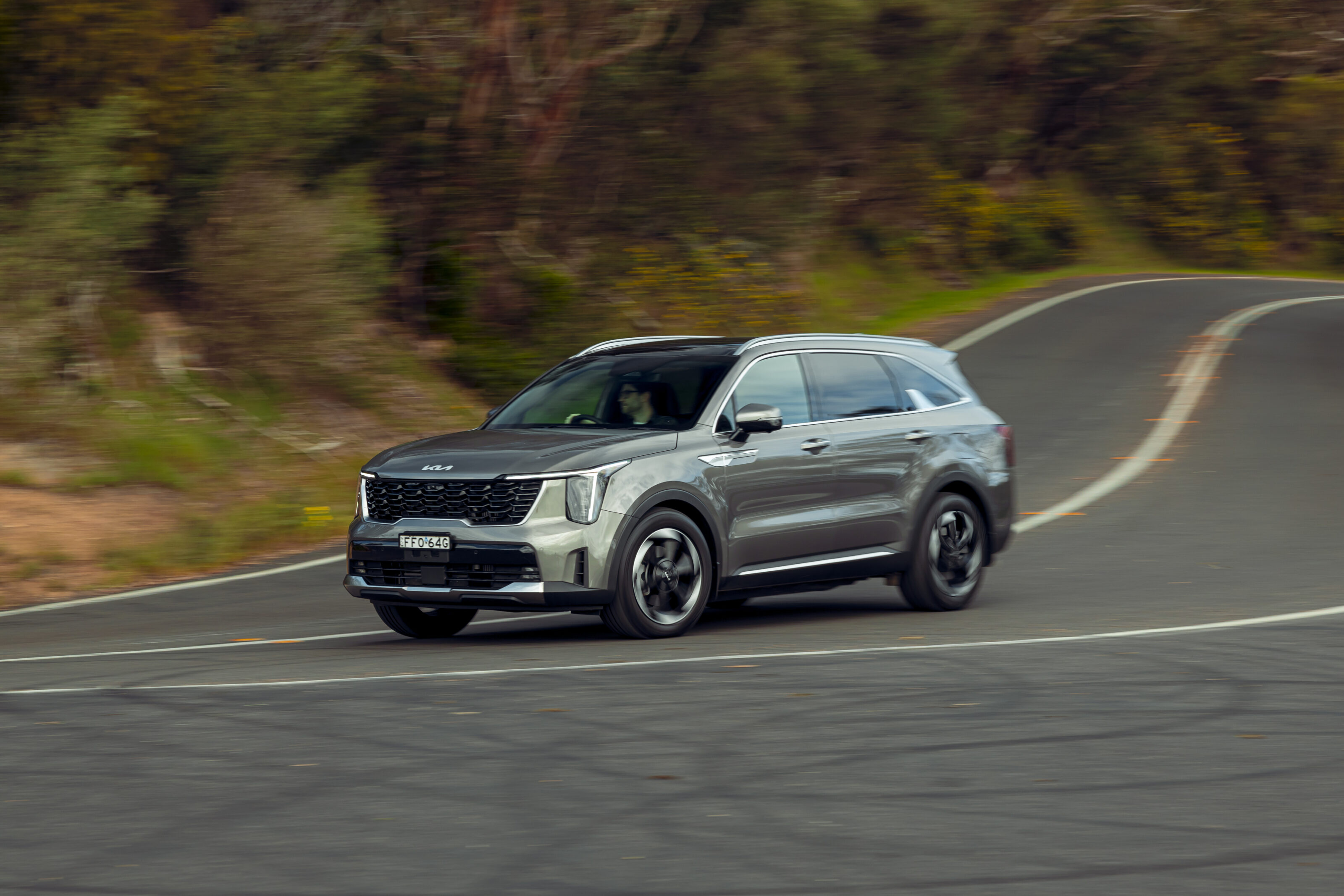
Being directly related means this pair share a lot of their core DNA. The hybrid engines, for example, are identical and combine a punchy 1.6-litre four-cylinder turbo-petrol with a 44kW electric motor fed by a small 1.49kWh battery pack. The appeal in going hybrid is obvious. With combined outputs of around 170kW and 350Nm (the on paper figures vary slightly, with the Hyundai’s 172kW/367Nm just trumping the Kia’s 169kW/350Nm), the promise is these SUVs will provide the best of both worlds – the response and refinement of a petrol engine with the economy and range of a diesel. With a full tank of 91-octane regular unleaded, both of these family SUVs will get close to 900km on a leisurely run.
Dimensionally, there’s only a cigarette paper between them, too. The Hyundai is 15mm longer and a sniff taller thanks to the Calligraphy’s roof racks but their key hardpoints, and 2815mm wheelbases, are identical. Even their stock kerb weights are lineball at around 2000kg.
But for all their similarities, it’s the Hyundai that makes the strongest first impression when you jump inside the cabin. It feels amazingly premium in here. Our car has a cream and green two-tone interior and the layout is so modern and spacious that it feels like a luxury product, not a humble mainstream family SUV.
Again, there’s a strong influence from Land Rover in the design – even the steering wheel is eerily reminiscent of a Range Rover’s four-spoke wheel – and there isn’t a single Hyundai badge in sight. Instead, you score a sleek horizontal badge with four dots, which is Morse code for the letter H.
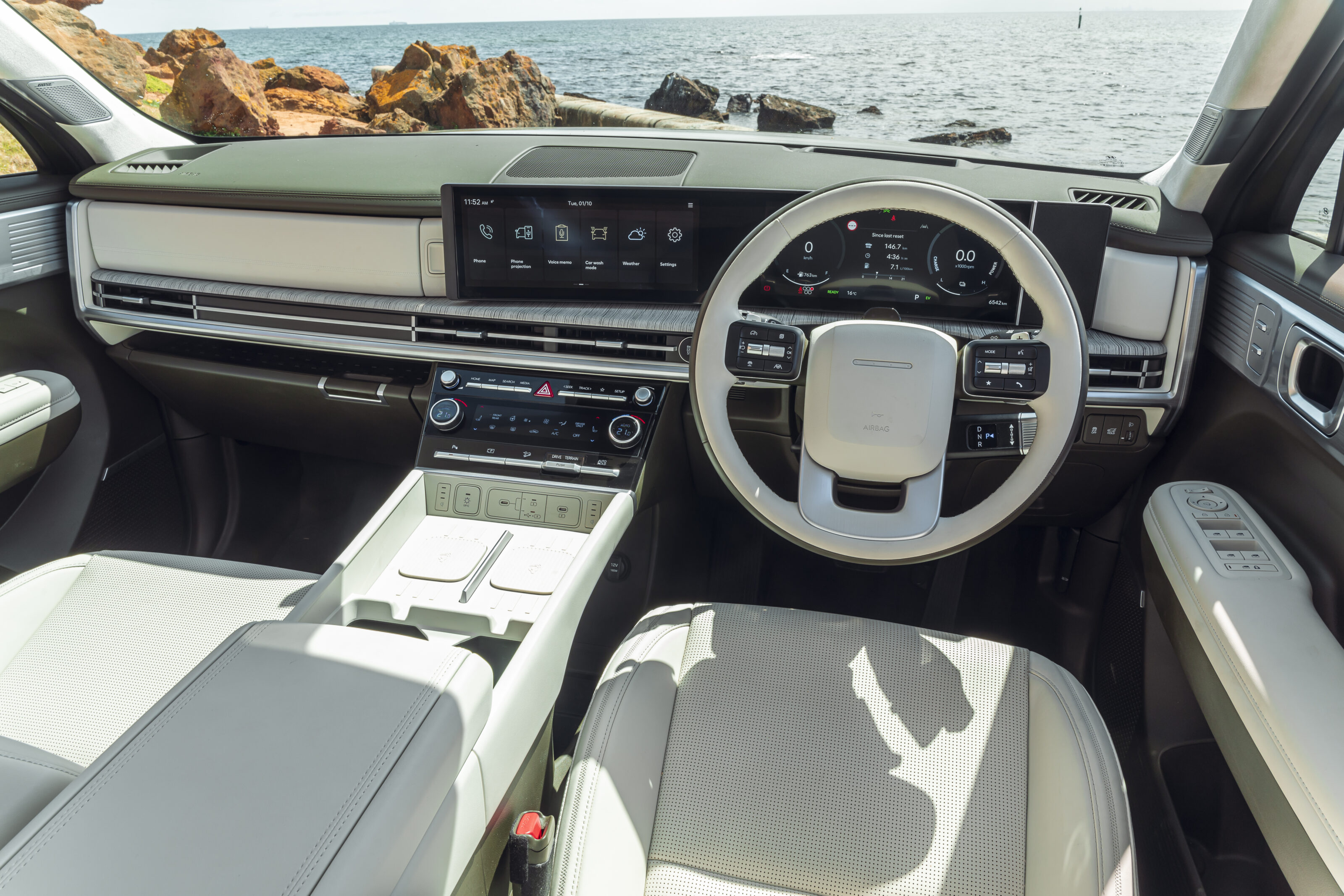

After the initial sense of plushness, you realise it’s a cabin that majors on two things: technology and storage. Two wireless charging pads adorn the top of the centre console, the centre screen is enormous, and a large head-up display and wireless Apple CarPlay/Android Auto are standard. The digital dashboard is the same twin-screen unit you get in the Sorento and it’s excellent in both cars with clear graphics, fast response times and a dense but logical menu structure.
Front storage is superior in the Hyundai, though. Unlike the Kia, which has a chunkier centre console, the Santa Fe has an extra storage cubby between the knees of the front passengers. The lidded centre bin at your elbow is also cavernous (it’s twin-hinged so it can be accessed by those in the front and the back) and there are two glove boxes, including one with a UV-C function that can sterilise items like your phone and keys.
There’s a useful shelf for small items between the two gloveboxes, too, which you don’t get in the Kia, and while the door pockets are on the skinny side, they’ll swallow a basic 600ml water bottle. Speaking of cupholders, there are 16 inside the Santa Fe which, apart from seeming like overkill, is four more than you get in the Sorento.
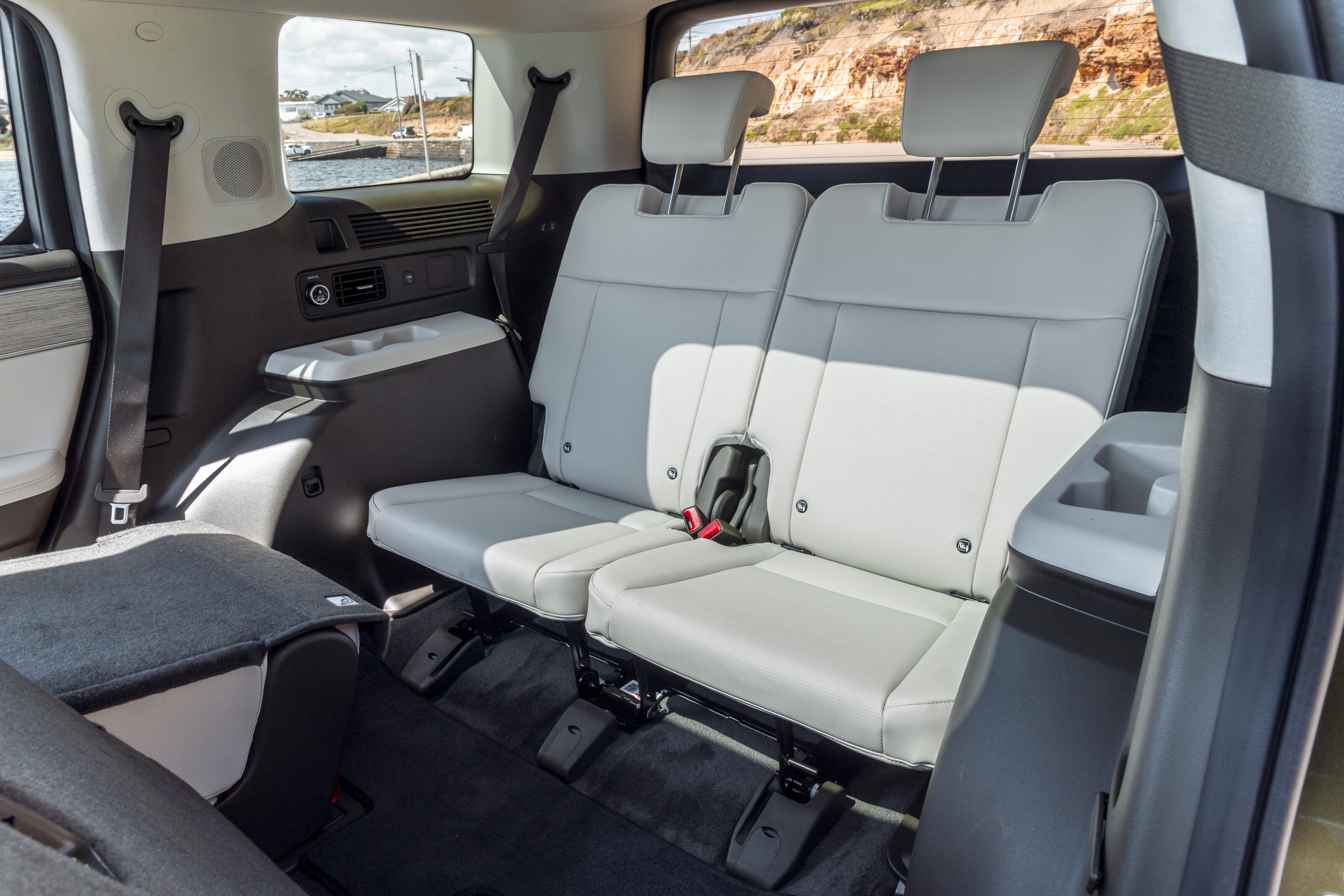
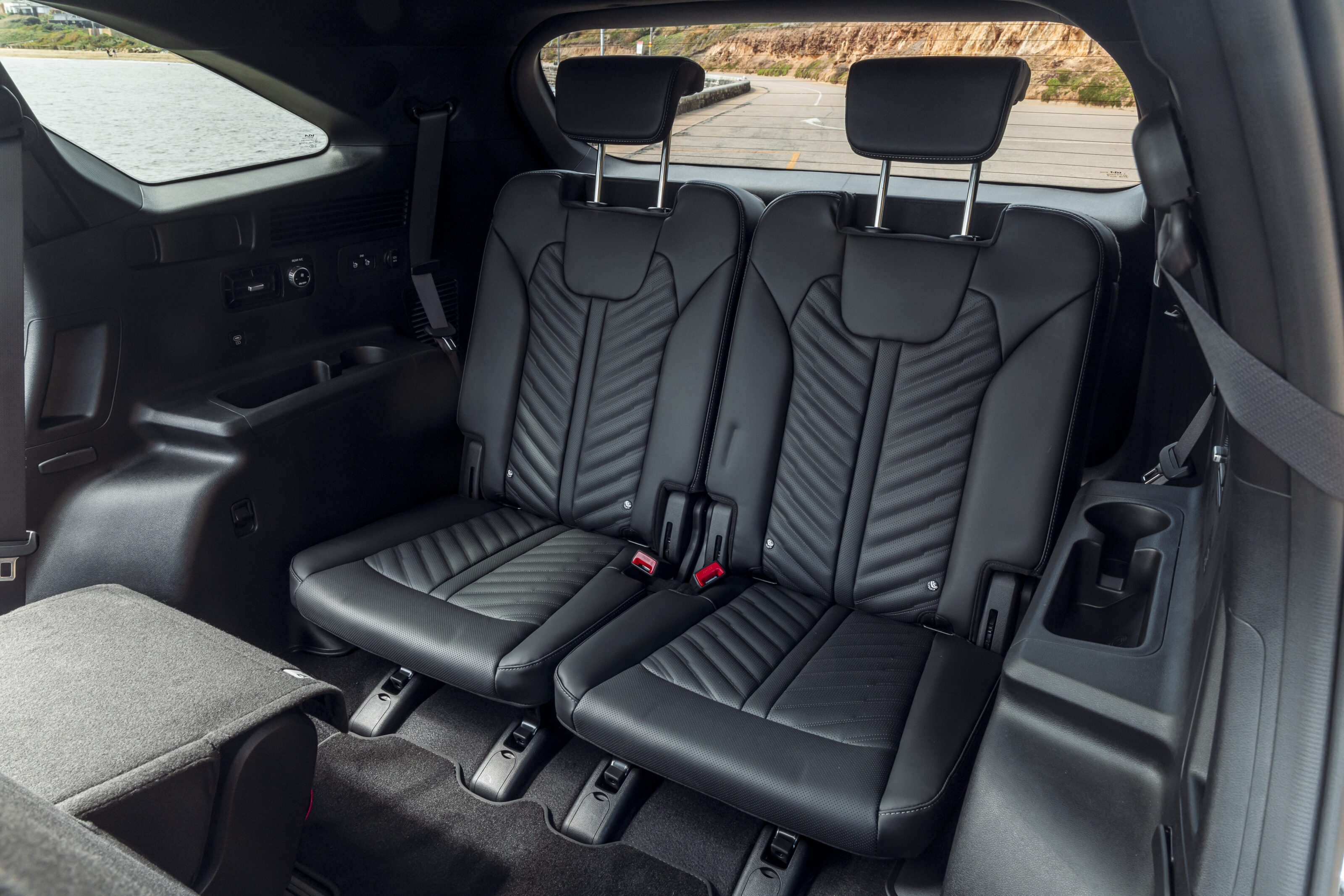
Seat comfort is superb and Hyundai has also struck a nice balance between physical and digital controls. There are knobs to adjust the temperature and volume but one minor complaint is the black touch panel that controls functions like the fan speed and heated/cooled seats soon looks ugly with fingerprints. Some of the cabin materials also feel a touch thin and plasticky but, ultimately, the Santa Fe’s cabin does a fabulous job of making you feel like you’re in a Range Rover. For half the price.
In contrast, the Sorento’s interior is instantly a much darker and more sombre place to sit. There’s still plenty of personality in the cabin design, though, and the recent facelift has done wonders in making the Sorento feel modern and contemporary. Where the old Sorento’s small centre screen, USB-A outlets and wired Apple CarPlay connection were beginning to betray its age, the tech offering in the 2024 model is bang up to date. Given their shared hardware and software, there’s little to separate the Kia and Hyundai for tech and connectivity, although the Sorento makes do with one wireless charging pad compared to the Santa Fe’s two.
Cabin space and storage also aren’t quite as generous in the Kia. And it can’t compete for sheer X-factor. The steering wheel design is more basic and while the Hyundai’s interior trim can feel insubstantial in places, it’s easier to find hard, shiny plastics in the Kia. There’s a greater use of piano black trim in the Sorento, too.
It’s a similar story in the second row. Climb into the Hyundai’s back seat and it’s the sense of space that strikes you first. The cushion has a high base, which is great for kids to get a better view out, and it’s amazingly feature rich back here. There are dual cupholders on the door cards, which will double as useful storage cubbies for your kids’ snacks and toys, and you score retractable window blinds, twin USB-C outlets, multiple coat hooks, and three-stage heated seats.
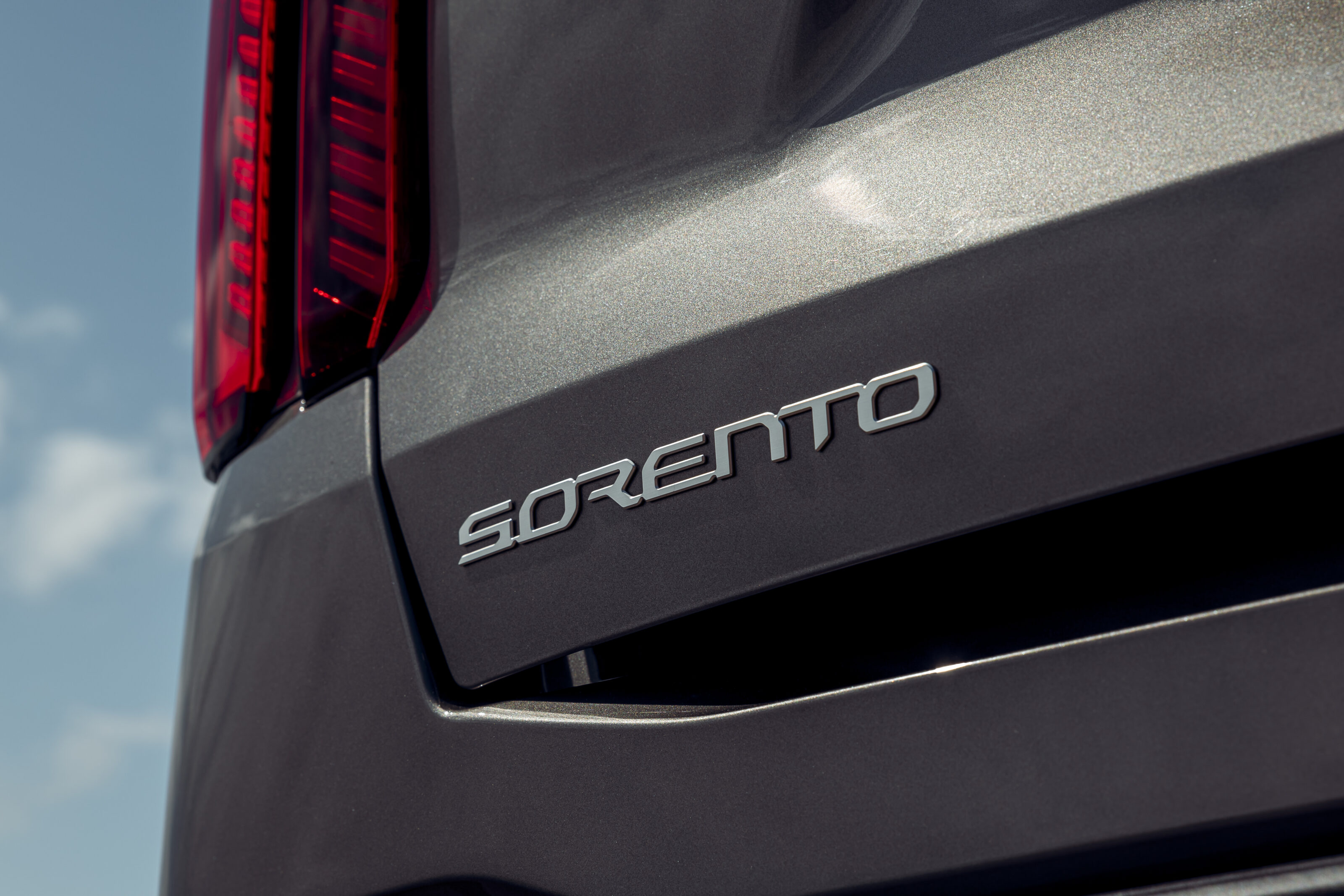
Six-foot adults will find they have ample knee, shoulder and head room, and there’s plenty of flexibility thanks to a sliding bench seat and an almost flat floor with no intrusive transmission tunnel. Ventilation is also excellent courtesy of face-level air vents in the B-pillars.
Things aren’t quite as good in the Sorento’s middle seat. While you get the same sliding bench and most of the same creature comforts (the air vents are in the back of the centre console rather than the B-pillar), you miss out on the coat hooks, there are only two stages for the heated seats compared with three, and there’s only one cupholder in the top section of the door card rather than two.
Third-row access is also superior in the Hyundai. Its boxier design and upright C-pillar mean the gap you have to clamber through is larger, and while both SUVs can carry adults in the rearmost pair of seats, the Hyundai has more headroom and offers features such as an adjustable backrest angle.
The Hyundai extends its growing advantage when it comes to boot space. While there’s little to separate them for sheer volume and amenity (the Hyundai has 628 litres of cargo capacity behind the second row compared to 608 in the Kia), the Santa Fe has a noticeably lower loading lip.
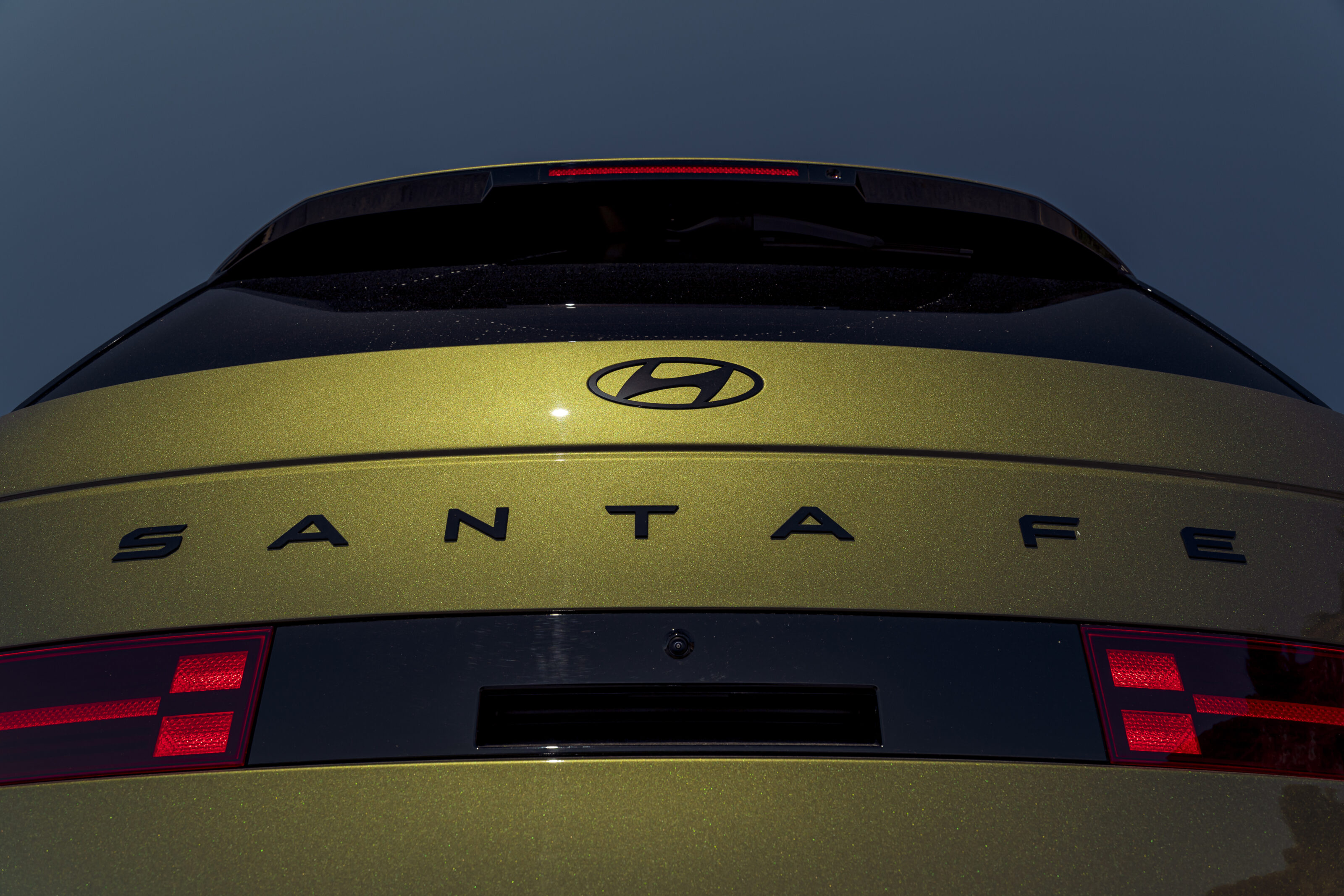
If it feels as though we’re splitting hairs to separate this pair, you’re bang on – their core attributes are remarkably similar – but one area where they’re distinctly different is how they drive.
The Kia is more car-like. Its thinner-rimmed steering gives you a firmer initial handshake and the ride on 19-inch alloys, which has been fine-tuned for Aussie conditions, is more locked down. Kia’s local chassis team has fitted the updated Sorento with specially developed dampers and the result is a large SUV that offers greater control, improved NVH, and a level of dynamic engagement that makes it genuinely fun on a winding road. The trade off is passengers can be jostled around a little more on broken back roads, but in most scenarios the Sorento strikes a commendable balance between ride comfort and control.
The Hyundai is softer and waftier. Its steering is lighter and less connected, and the wheel itself is also thicker, which contributes to a sense of distance between you and the road surface. Body roll is more noticeable, too, and on twisty roads the Hyundai doesn’t have the damping control of the Sorento, so it’s not as engaging. It’s still impressively capable for a near two-tonne seven-seater, though. Push through the steering’s vagueness and the Santa Fe displays a level of dynamic competence that’s surprising for such a big vehicle.
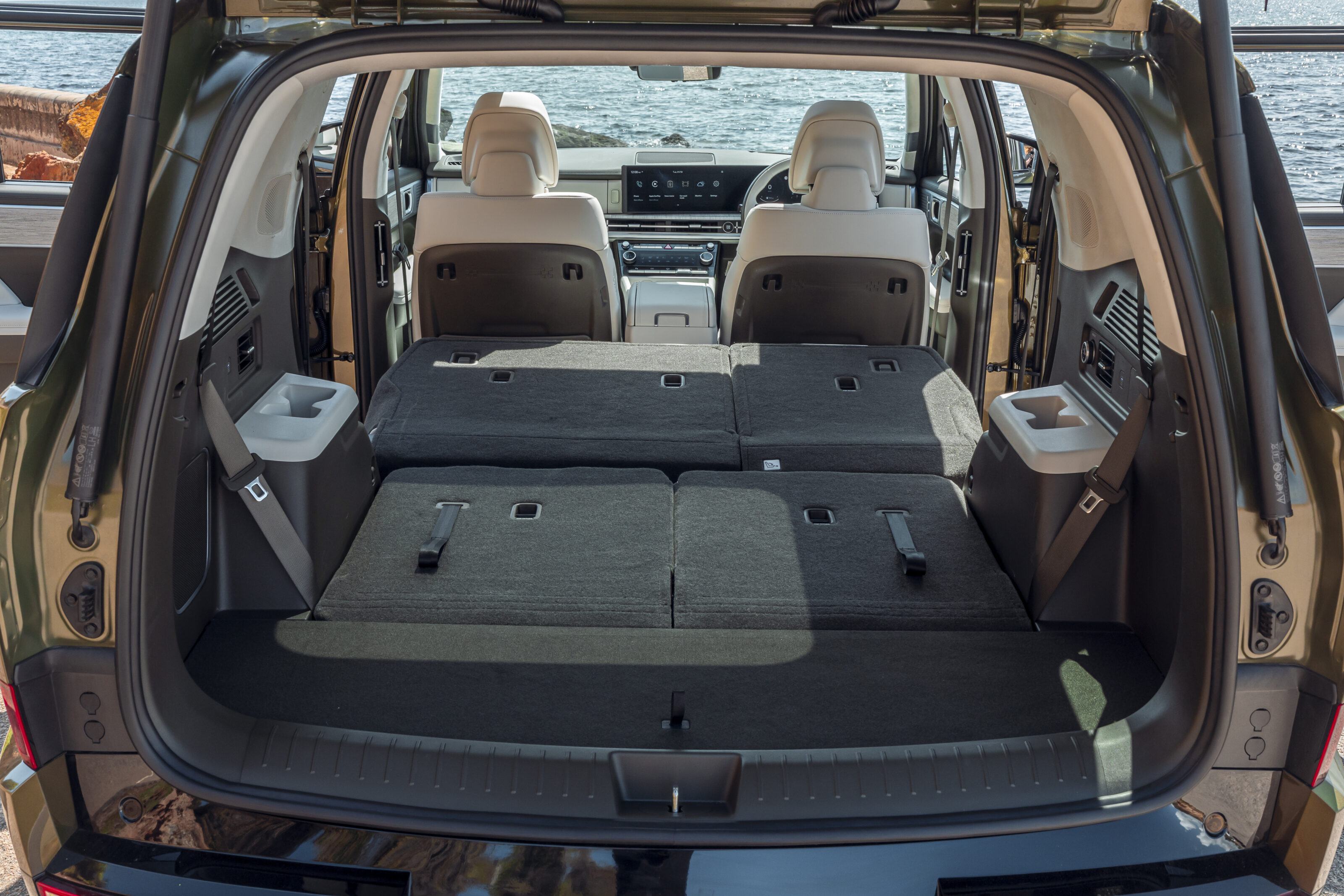
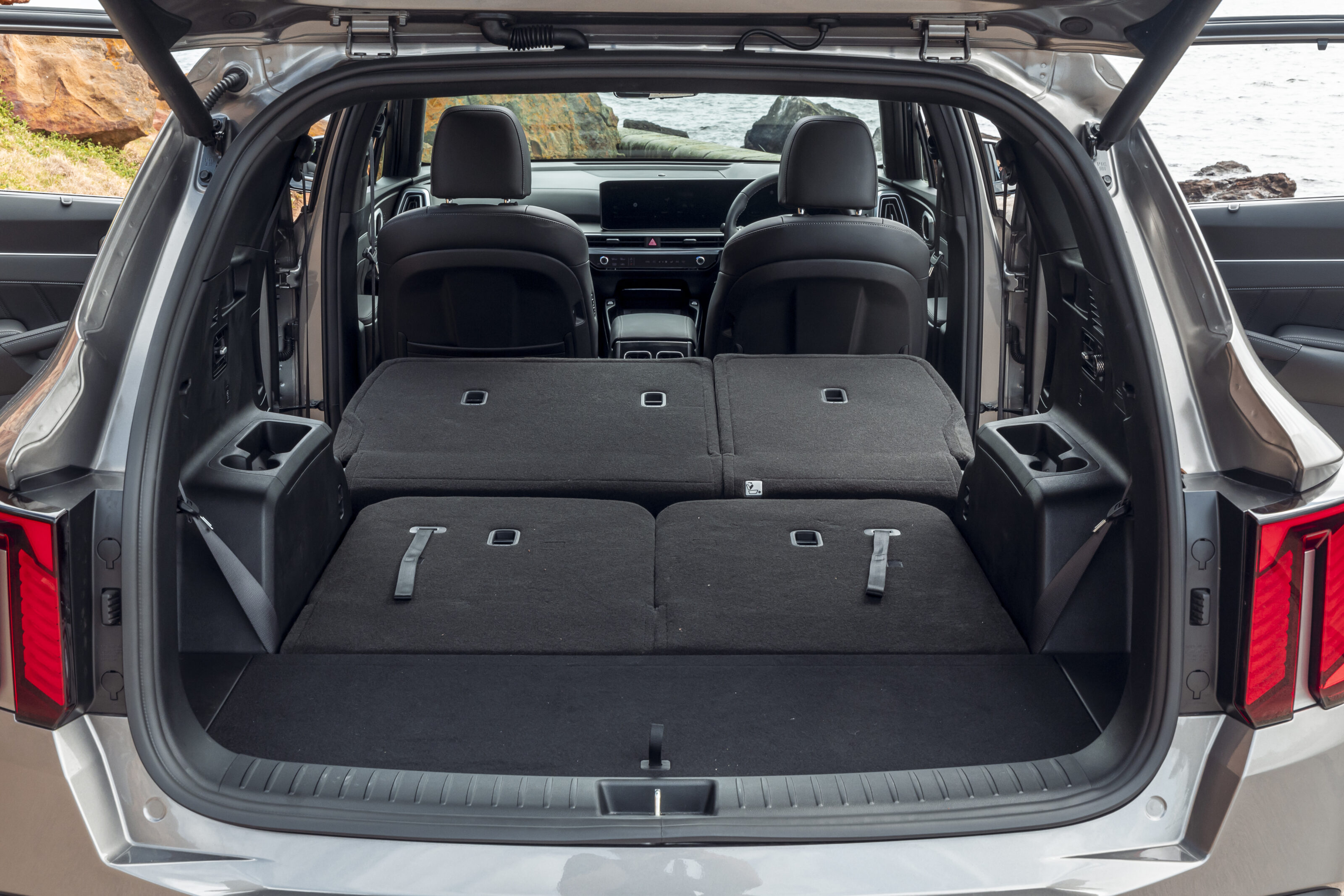
You might fear that 1.6-litres isn’t enough to propel a vehicle of this size but the performance, response and refinement of the powertrain is commendable in both SUVs. There’s ample grunt for easy overtakes and you also score three levels of regen’ braking which you adjust via the steering-wheel paddles. The engine is better isolated in the Hyundai, however. On a constant throttle at around 3500rpm, the Sorento’s turbo-petrol can be a touch vocal. As for fuel economy, there’s nothing to split them with the Santa Fe returning 7.1L/100km over our test loop compared with 7.2L/100km in the Sorento.
Still, against the scorecard it’s a clear win for the Hyundai. As an all-new generation vehicle it’s half a step ahead of the Sorento in its life-cycle and it feels it. But the margins between this pair are so small that it’s easy to recommend both. A Toyota Kluger hybrid feels noticeably less polished by comparison, so really the decision will come down to which of this duo you like the look of more. Either way, you can’t lose.
Hyundai Santa Fe
IF YOU desire colour and flair in your interiors then you’re going to adore the Santa Fe Calligraphy in two-tone Forest Green or Pecan Brown. It’s Range Rover-rivalling for a fraction of the price. Both front seats get ‘relaxation’ recline function with electric ottomans. There’s also dual wireless charging pads (plus wireless smartphone mirroring) and double-deck centre console storage, though door bins are comparatively stingy. Vision, refinement, ride comfort and seat support all excellent, with superior third-row access to Sorento thanks to upright C-pillars. Some lower plastics betray Hyundai’s cost-consciousness, yet they’re hardly worth criticising – this interior sets a new benchmark for large mainstream SUVs.
| Price | $75,000 |
|---|---|
| Engine | 4cyl, dohc, 16v, direct injection, turbo |
| Electric motor | 4/5 |
| Battery | 1.49kWh lithium-ion polymer |
| Layout | Front-engine, all-wheel drive |
| Capacity | 1598cc |
| Power | 172kW @ 5600rpm |
| Torque | 367Nm @ 1000-4100rpm |
| Transmission | 6-speed automatic |
| L/W/H/WB | 4830/1900/1770/2815mm |
| Track (F/R) | 1637/1647mm |
| Weight | 1990kg |
| Boot | 628 litres |
| Fuel tank | 91 RON/67 litres |
| Economy | 5.6L/100km (combined), 7.1L/100km (tested) |
| Suspension | Front: struts, A-arms, anti-roll bar Rear: multi-links, coil springs, anti-roll bar |
| Steering | Electric power-assisted |
| Front brakes | Ventilated disc (325mm) |
| Rear brakes | Ventilated disc (325mm) |
| Tyres | Kumho Ecsta PS71 |
| Tyre size | 255/45R20 105V |
| Safety | Not tested |
| Performance | 9.0sec (claimed) |
| Verdict | 9.0/10 |
Kia Sorento GT-line HEV
OLDER KIA INTERIOR clearly shares its hardpoints with the Santa Fe (such as door handle and armrest placement), as well as its curved dual 12.3-inch screen set-up. While everything works impressively well, it does feel a generation older, and a slight step down in terms of switchgear slickness and control layout. GT-Line’s beautifully quilted Nappa leather seats only come in sombre charcoal, though Sorento’s larger single-pane panoramic sunroof (with electric blind) lets in plenty of light. Thinner-rimmed steering wheel guides a sportier driving experience, with sharper handling, tighter body control, though both are great to drive. And difficult to separate apart from the way they look.
| Price | $73,990 |
|---|---|
| Engine | 4cyl, dohc, 16v, direct injection, turbo |
| Electric motor | Front permanent magnet synchronous |
| Battery | 1.49kWh lithium-ion polymer |
| Layout | Front-engine, all-wheel drive |
| Capacity | 1598cc |
| Power | 169kW |
| Torque | 350Nm |
| Transmission | 6-speed automatic |
| L/W/H/WB | 4815/1900/1700/2815mm |
| Track (F/R) | 1637/1647mm |
| Weight | 1972kg |
| Boot | 608 litres |
| Fuel tank | 91 RON/67 litres |
| Economy | 5.7L/100km (combined), 7.2L/100km (tested) |
| Suspension | struts, A-arms, anti-roll bar Rear: multi-links, coil springs, anti-roll bar |
| Steering | Electric power-assisted |
| Front brakes | Ventilated disc (325mm) |
| Rear brakes | Ventilated disc (325mm) |
| Tyres | Premium Contact 6 |
| Tyre size | 235/55R19 105V |
| Safety | (2020) |
| Performance | 9.0sec (claimed) |
| Verdict | 8.5/10 |
Hang on, what about Kluger?

If you’re in the market for a large seven-seat SUV with a hybrid powertrain then chances are you’re considering a Toyota Kluger. It’s easily the most popular contender in this class, but how does it compare? Well, it’s more expensive. A flagship Kluger Grande AWD is $80,230 before on-road costs, which makes it more than $5000 pricier than an equivalent Santa Fe or Sorento. You do get more capacity and power in the Toyota, though, with its 2.5-litre hybrid powertrain churning out 184kW. And you’ll still get impressive fuel consumption thanks to an official 5.6L/100km economy figure which is near identical to the Sorento (5.7) and Santa Fe (5.6). As for what’s missing? Despite solid bones, the Toyota can’t match the Kia and Hyundai for visual drama, richness of design or feeling of expense.

